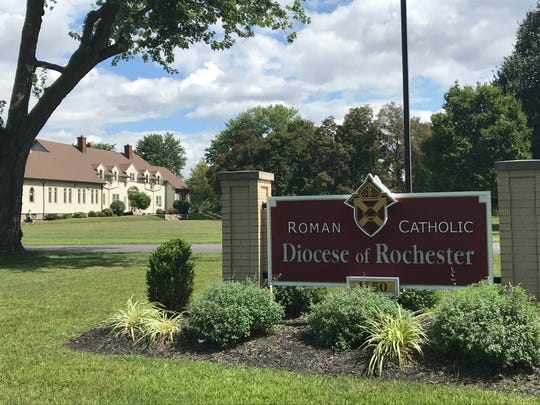Sexually Abused by a Local Priest? Here's How You Can File a Claim
By Steve Orr
The bankruptcy filing ends the chance of sex-abuse trials in open court but will provide an opportunity for compensation and perhaps closure. "This is the one chance we will have to finally hold the church accountable for the decades of abuse that occurred within their walls and under their watch. It is critical that Rochester survivors come forward, seek legal counsel, and finally secure the justice they have long deserved," said Michael Pfau, a Seattle sexual-abuse attorney who represents a number of local claimants. What you need to know about claims: When must claims be filed? Claims are being accepted now. All claims must be filed no later than 11:59 p.m. EDT on Thursday, Aug. 13. Why that date? The diocesan deadline coincides with the end of a one-year period set out in New York's Child Victims Act — during which people may file lawsuits against those they hold responsible for child sexual abuse in the past. Using the same deadline in both instances avoids confusion, lawyers in the bankruptcy case have said. Who must file? Anyone who believes he or she was sexually abused while a child by a priest, nun, brother, deacon or other Catholic minister. The same applies to adult victims who were unable to given consent because of a disability or other legally valid reason. Administrators of estates who can prove the deceased was a child victim also can file. It does not matter how long ago the abuse occurred. How are claims filed? Claimants must fill out a proof of claims form consisting of about two dozen questions and submit it for inclusion in the bankruptcy case. But the forms cannot be sent to the court or to the diocese. Instead, claimants must get their form to Stretto, a bankruptcy-support company hired by the diocese that is bound by the strict rules of confidentiality set up for claims. An online resource allows claimants to fill out and file the form with Stretto electronically. It also allows claimants to download the form, fill it out by hand and submit it via postal mail or courier. That resource is at case.stretto.com/rochesterdiocese/fileaclaim Take care to use the "Sexual abuse proof of claim," not the "General proof of claim." The postal address is The Diocese of Rochester, Claims Processing c/o Stretto, 410 Exchange, Suite 100, Irvine, CA 92602. Claimants who do not want to use the online system may call Stretto and ask that a proof of claim form be mailed to them. The number is (855) 347-3773. What kind of information must claimants provide? Basic personal information — name, address, employment and educational history, marital status and so on. The who, what, where and when of the sexual abuse suffered by the claimant as a child. The names of anyone who was told about or witnessed the the abuse. Any lasting emotional, medical or financial impact of the abuse. Who can see the forms? Bishop Salvatore Matano and other diocesan officials, their lawyers, insurers and court officials can see the entire form, as can outside parties authorized by the claimant. Lawyers who represent child sex abuse victims in the bankruptcy case can see the forms but with names and addresses blacked out. However, claimants may check a box on the form agreeing to make make their forms part of the public record of the case, meaning anyone can see them if they wish. Do claimants need a lawyer? No, though some lawyers said it's advisable to have one to help submit a claim and navigate the process. Claimants who have already filed a suit in state court must submit a form; the lawyers who filed those suits will help with the claims form. How will this be publicized? In a host of ways, including on the diocese's website and social media pages; in ads in numerous newspapers throughout New York state and beyond; in press releases to many news outlets; in parish bulletins and via notices posted in government buildings. As well, letters will be mailed to many local Catholics and to Catholic school alumni. How will the forms be used? At some point, people whose claims are deemed credible will share in a financial settlement. It will be months to several years before a settlement fund is assembled and a determination is made how much each claimant will be paid. The amount will be based partly on how much money the diocese can marshal. Most other dioceses and Catholic orders that filed bankruptcy in the last decade have paid between $300,000 and $550,000 per claim, though a few have paid less than $100,000 each. Contact watchdog reporter Steve Orr at sorr@democratandchronicle.com or at (585) 258-2386. Follow him on Twitter at @SOrr1. This coverage is only possible with support from our readers. If you don't already have a digital subscription, please sign up today.
|
.
Any original material on these pages is copyright © BishopAccountability.org 2004. Reproduce freely with attribution.
